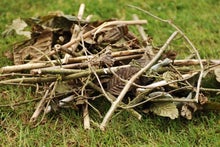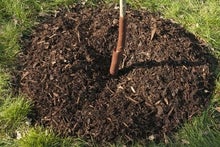
Quick facts
Ways to support wildlife living in dead wood and in your garden;
Leave some dead wood in trees
Make a log pile
Build a log wall
Create a ‘dead hedge’
Have one or more compost heaps
Dead wood in trees and stumps

Much wildlife feeds on living timber – wood-boring beetles, for instance, or deer and rabbits which can cause a nuisance to gardeners by occasionally ringbarking trees and shrubs. Dead wood, whether in living trees or fallen timber, offers opportunities for the decomposers and other creatures that live in the decaying tissue. In fact, dead wood is associated with its very own set of species of invertebrates numbering into the hundreds and woodpeckers, nuthatches and treecreepers feed on them in standing trees. Interestingly, dead wood in standing trees (i.e. still upright) will play host to slightly different invertebrates from fallen dead wood laying on the ground.
If a tree has to be felled, consider leave the stump in situ or have it dug or winched out to make the start of a ‘stumpery’. Popular with the Victorians, a ‘stumpery’ is a garden feature created by piling tree stumps together and interplanting with ferns and other shade-loving plants. It’s a fun way to make the most of old stumps. Where this might not be such a good idea is if the trees were suffering from a root disease such as honey fungus or where such a disease is known to be present in that part of the garden.
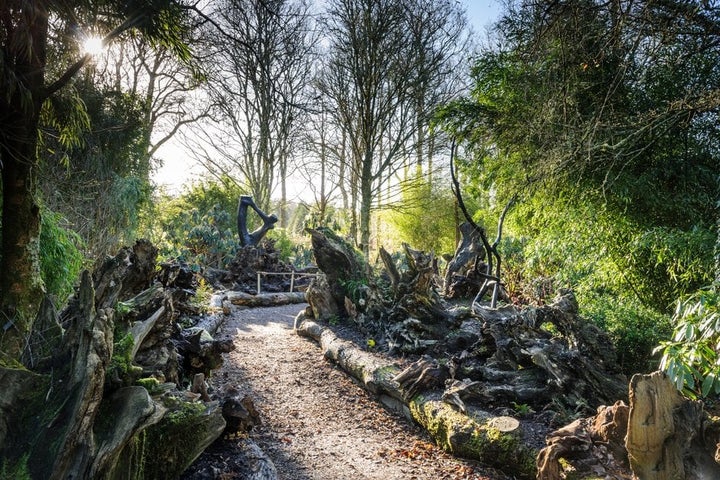
Worried about disease?
Most dead wood in a garden is not diseased. But it can readily be colonised by natural decay fungi, known as saprophytic fungi. These help to recycle the carbon and stored in the woody tissues back into your garden for use by plants so are nothing to worry about.
An exception would be wood that is associated with tree death, such as tree stumps riddled with honey fungus, prunings showing signs of coral spot, or ailing trees with bracket fungi. Best to have sick trees inspected by a professional and to take diseased timber either to your local waste disposal site or burn it when dry.
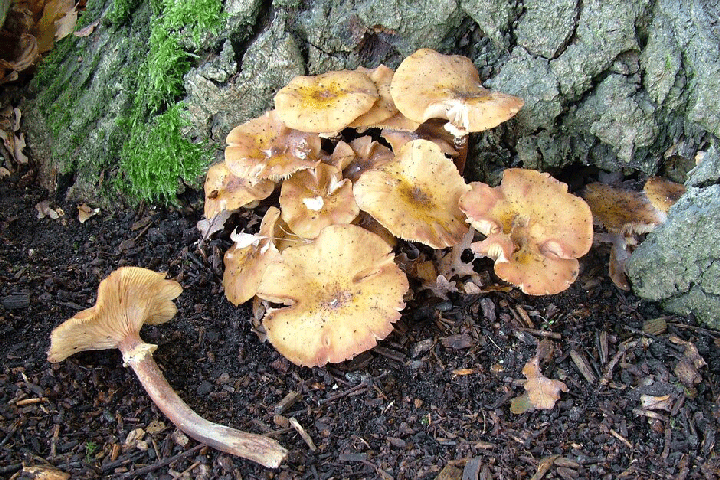
Log piles
Put logs to good use for wildlife by creating a log shelter. They can also be used for edging woodland garden paths or simply placing randomly in a border but stacking logs creates nooks and crannies for wildlife to occupy and means the wood in the centre and bottom stays wetter, rotting more quickly and providing more habitat opportunities than dry logs alone. Damp conditions behind peeling are very inviting for woodlice, spiders and beetles, which will benefit hedgehogs, frogs and shrews that feast on the insects at ground level. Butterflies and ladybirds take up residence in the drier parts over winter.
A small pile of logs can support a multitude of different insects, provide a refuge and hunting ground for small mammals, reptiles and amphibians, and shelter for over-wintering and hibernating wildlife. Fungi, wood-boring insects, woodlice, beetle grubs and wood wasps all find homes and food in the logs. These are prey for other animals too: spiders, frogs, toads, hedgehogs and birds. A simple pile of logs can very quickly become a flourishing wildlife community.

Making your log pile
Getting hold of logs may require a little imagination. Taking dead wood from the wild is not a good idea as it always benefits wildlife more if left where it has fallen. It may also be illegal to gather it in certain places. Maybe you or your friends or neighbours have had some treework done. This can be a good starting place or get in touch with a local tree surgeon. Ideally the logs should still have its bark. Treated timber such as fence posts and tree stakes is not as beneficial.
It is up to you where you site your log pile. Tuck it away behind the shed, or at the back of a border. Or make a proud feature of it in the middle of your border. Locating a log pile near a pond provides a convenient hole and hibernation site for frogs, toads and other amphibians and greatly increases their chances of survival.
Use different lengths of logs but nothing too twiggy; lots of thin twigs will mean the pile will rot too quickly and collapse. Bury the lower logs into the soil a few centimeters. This keeps them damp and the resident creatures happy.
Plant ferns, bluebells and primroses around and about for a woodland feel. A log pile or stump can also be greatly beautified by growing flowering climbers over it, for example, clematis or honeysuckle. This is like adding an extra floor to a wildlife apartment block.
Tracy Snell, Garden Manager at RHS Bridgewater, shows us how to build a wildlife log pile
Log walls
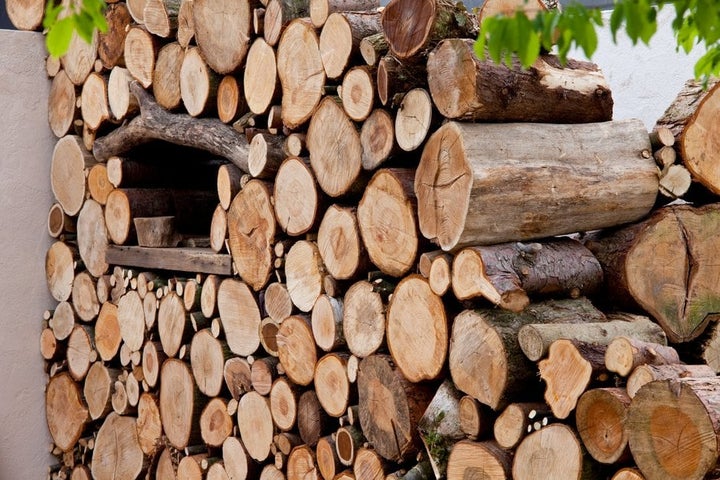
If you’re fortunate enough to have a generous supply of logs, you could try your hand at building a log wall. To help make it stable, use the largest logs towards the bottom of the wall and taper the sides so it is narrowest at the top. Alternatively, if you have two strong supports such as garden walls between which to stack your logs, go as high as you like.
You can just leave your log wall bare at the top. In time the logs will start to rot and develop their natural ‘coping’ of moss, ferns or opportunistic flowers such as pellitory-of-the-wall (Parietaria judaica). Or if you prefer you could get creative by using a cap of flat turf or turf rolls.
Top Tip
Provide instant housing for solitary bees by drilling random holes in the exposed ends of your logs.
Always take care with safety when working on logs walls or with children in the garden. A big pile of logs may be a tempting climbing frame but unless secured at each end a log stack is unstable and can cause injury if it gives way.
Dead hedges
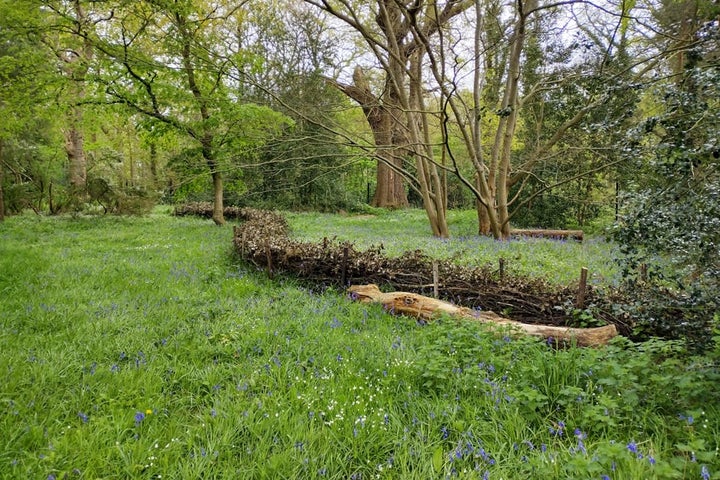
A ‘dead hedge’ is a nifty way to put woody prunings to good use and can offer more instant wildlife cover than a newly planted conventional hedge. It creates a habitat for insects and beetles as well as a rich feeding ground for small mammals such as hedgehogs. Long found in managed woodlands and reserves, dead hedges are increasingly being used in gardens as a great way to repurpose woody ‘waste’ into habitat and even a design feature. Prunings from fruit trees, hedges and ornamental shrubs can all be used.
For an attractive and wildlife-friendly barrier, drive a parallel line of upright poles into the ground every 1.5 metres. Chicken wire can be used to define the space to be filled if needed, but if your hedge is a boundary, be sure hedgehogs have somewhere to pass through. Longer twigs should be able to hold without the need for wire. Pack prunings lengthways. Depending on the uprights, the ‘hedge’ can be up to around 2m tall.
The twigs will rot and crumble quite quickly, and this decaying timber has wildlife value. Simply top up the shrinking prunings each year and, from time to time, knock in replacement uprights.
Check out The Nest at RHS Wisley for inspiration on how a dead hedge can become a unique design feature, wildlife zone, microclimate for new planting opportunities and secluded seating area all at once.
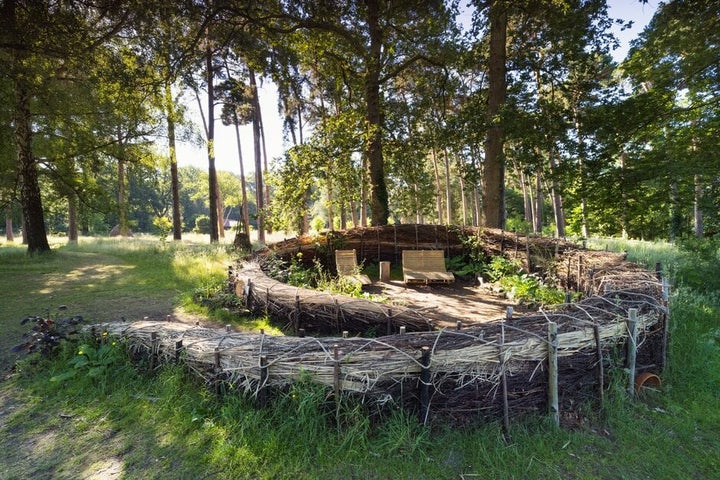
Chipped bark or woody prunings
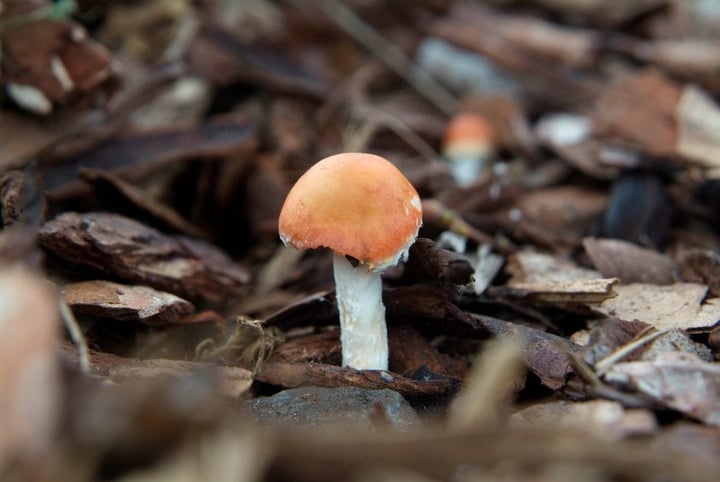
Dead wood left intact is great for wildlife. Shredding or chipping it will speed up its breakdown, but it will still be used or colonised by many organisms such as harmless fungi. Learn more about shredding and woody waste or where to use it in the garden in our RHS Guides below.
Compost heaps

Composting is cheap and easy and creates a wonderful end product that feeds the soil and improves its structure. It’s a great idea for every gardener, but especially the wildlife gardener.
Most of the process is carried out by tiny animals, fungi and bacteria, almost invisible to the naked eye. Slugs and snails, springtails, woodlice, millipedes, earwigs, worms, beetles and other creatures consume the decaying matter and these attract hedgehogs, birds, frogs and toads who feed on them. The decomposition process generates heat which makes the heap an inviting place for reptiles such as lizards and slow-worms and, if you’re lucky, for grass snakes to lay their eggs.
Top Tip
If you have space, having several heaps on the go ensures there’s always somewhere for wildlife to use.
An unrestricted heap might look a bit untidy but is more accessible for larger animals like hedgehogs and toads. Plastic or metal bins are more practical in a smaller garden, and will be colonised by worms and invertebrates such as springtails, but they are unlikely to accommodate larger creatures which will have difficulty getting in.
A traditional boxed compost heap is probably the happy medium and is reasonably simple to build. The compost sits directly on the ground which means easy access for worms and other creatures. The sides can be made from wooden boards or old pallets. Find more tips for success in our guide to composting.
